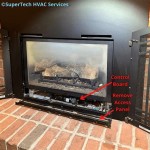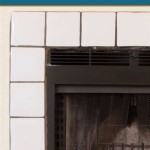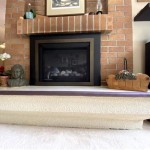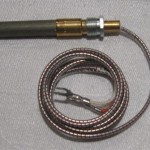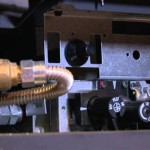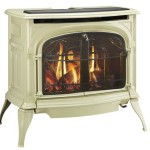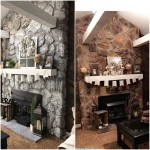Light Bulb Considerations for Electric Fireplaces
Electric fireplaces offer a convenient and aesthetically pleasing alternative to traditional wood-burning fireplaces. They provide the ambiance of a real fire without the mess, safety concerns, or maintenance requirements. A critical component of the electric fireplace experience is the illumination that simulates the flickering flames. This illumination is typically achieved through the use of light bulbs strategically positioned within the unit. Selecting the correct light bulb for an electric fireplace is essential for optimal performance, longevity, and visual appeal. Factors such as bulb type, wattage, color temperature, and physical size all play a role in ensuring that the fireplace operates as intended and provides the desired aesthetic effect.
Understanding the specific requirements of an electric fireplace's lighting system is paramount before replacing a bulb. Consulting the manufacturer's instructions is crucial to avoid damage to the unit or potential safety hazards. The improper selection of a light bulb can lead to overheating, reduced lifespan of the bulb, or even damage to the electrical components of the fireplace. This article will explore the key considerations for selecting the appropriate light bulbs for electric fireplaces, delving into different bulb types, wattage requirements, color temperature options, and other relevant factors.
Understanding Different Types of Light Bulbs
Several types of light bulbs can be used in electric fireplaces, each with its own advantages and disadvantages. The most common types include incandescent bulbs, halogen bulbs, and LED bulbs. Incandescent bulbs were traditionally the standard, but they are gradually being phased out due to their lower energy efficiency and shorter lifespan. Halogen bulbs offer improved energy efficiency compared to incandescent bulbs and provide a brighter, whiter light. LED bulbs are the most energy-efficient option and offer the longest lifespan, making them a popular choice for modern electric fireplaces.
Incandescent Bulbs: These bulbs produce light by heating a filament until it glows. While relatively inexpensive, they are inefficient, converting only a small percentage of the electricity they consume into light. The rest is emitted as heat. This high heat output can be a concern in enclosed spaces like electric fireplaces, potentially leading to overheating issues. Incandescent bulbs also have a shorter lifespan compared to other options, typically lasting only around 1,000 hours.
Halogen Bulbs: Halogen bulbs are a type of incandescent bulb that contains a halogen gas, such as iodine or bromine. This gas allows the filament to burn at a higher temperature, resulting in a brighter, whiter light and improved energy efficiency compared to standard incandescent bulbs. Halogen bulbs still produce a significant amount of heat, although slightly less than incandescent bulbs. Their lifespan is also longer, typically ranging from 2,000 to 4,000 hours.
LED Bulbs: Light-emitting diodes (LEDs) are semiconductor devices that emit light when an electric current passes through them. LED bulbs are the most energy-efficient option, consuming significantly less electricity than incandescent or halogen bulbs to produce the same amount of light. They also have a much longer lifespan, often lasting 25,000 hours or more. LED bulbs generate very little heat, making them a safer option for enclosed spaces. They are also available in a wide range of colors and color temperatures, allowing for greater flexibility in achieving the desired aesthetic effect.
Importance of Wattage and Voltage Considerations
Wattage and voltage are crucial factors to consider when selecting a light bulb for an electric fireplace. The wattage rating indicates the amount of power the bulb consumes, while the voltage rating specifies the electrical potential required for the bulb to operate correctly. Using a bulb with the incorrect wattage or voltage can lead to several problems, including premature bulb failure, overheating, and even damage to the fireplace's electrical system. It's imperative to adhere to the manufacturer's specifications to ensure safe and efficient operation of the electric fireplace.
Electric fireplaces are designed to operate with specific wattage ratings for their light bulbs. Exceeding the recommended wattage can overload the circuit and potentially cause a fire hazard. Conversely, using a bulb with a lower wattage than recommended may result in insufficient illumination and a less convincing flame effect. The manufacturer's instructions will clearly state the acceptable wattage range for the light bulbs used in the fireplace. These instructions should be consulted and strictly followed during bulb replacement.
Voltage is another critical factor to consider. In most residential settings, electric fireplaces operate on a standard voltage of 120V. Using a bulb with a different voltage rating can prevent it from functioning properly or even cause it to burn out immediately. Always verify that the voltage rating of the replacement bulb matches the voltage requirements of the electric fireplace. Mismatched voltage can lead to electrical damage and potential safety risks.
When upgrading to LED bulbs, it's important to confirm that the LED bulb is compatible with the electric fireplace's dimmer switch, if equipped. Some older dimmer switches may not be compatible with LED technology, which can result in flickering or buzzing. Using a compatible LED bulb and dimmer switch will ensure smooth and reliable operation.
Color Temperature and Aesthetic Effects
The color temperature of a light bulb is measured in Kelvin (K) and describes the warmth or coolness of the light emitted. Lower Kelvin values (e.g., 2700K) indicate a warmer, more yellow light, while higher Kelvin values (e.g., 5000K) indicate a cooler, more blue light. The color temperature of the light bulb significantly impacts the overall aesthetic effect of the electric fireplace, influencing the perceived realism and ambiance of the flames.
For electric fireplaces, warmer color temperatures in the range of 2200K to 3000K are generally preferred. These warmer colors mimic the appearance of natural flames, creating a cozy and inviting atmosphere. Light bulbs with a color temperature in this range produce a yellowish-orange glow that closely resembles the color of burning wood. This helps to enhance the realism of the simulated flames and provide a more authentic fireplace experience.
Experimenting with different color temperatures can allow for customization of the fireplace's aesthetic. For example, using a bulb with a slightly higher color temperature, such as 3500K, can create a brighter and more vibrant flame effect. Conversely, using a bulb with a lower color temperature, such as 2000K, can produce a more subdued and romantic ambiance. The choice of color temperature ultimately depends on personal preference and the desired aesthetic outcome.
In addition to color temperature, the color rendering index (CRI) is another factor that can affect the appearance of the flames. CRI measures how accurately a light source renders the colors of objects compared to natural sunlight. A higher CRI indicates more accurate color rendering. For electric fireplaces, a bulb with a CRI of 80 or higher is generally recommended to ensure that the flames appear as natural and realistic as possible.
Many modern electric fireplaces offer adjustable flame color settings, which allow users to customize the color of the flames to suit their preferences. These settings typically use LED bulbs with multiple color channels, allowing for a wide range of color combinations. Understanding the relationship between color temperature and aesthetic effects can help users to maximize the potential of these adjustable flame color settings.
Ultimately, the selection of the appropriate light bulb for an electric fireplace involves careful consideration of several factors, including bulb type, wattage, voltage, color temperature, and CRI. By understanding the characteristics of different bulb types and their impact on the overall aesthetic effect, users can ensure that their electric fireplace provides a realistic and enjoyable experience.
Furthermore, proper maintenance of the light bulbs in an electric fireplace is essential for optimal performance and longevity. Regularly check the bulbs for signs of wear or damage, and replace them promptly when necessary. Keeping the area around the bulbs clean and free of debris can also help to prevent overheating and prolong their lifespan.
By following these guidelines, users can select the best light bulbs for their electric fireplaces and enjoy the warmth and ambiance of a simulated fire year-round.

ᑕ❶ᑐ How To Replace A Bulb In An Electric Fireplace Magikflame

Dimplex Heater Electric Fire Optiflame Light Bulbs X 2 E14 Ses Energy Saving 6w Led In Candle Lamp Average Life 20 000 Hours Replacement For Incandescent And Halogen Tdspares

Lamp Bulb For Dimplex Optimyst Fire Heater Opti Myst Amber Light Cavendish Csh20

How To Replace The Light Bulbs On Your Dimplex Electric Fireplace

Adam Electric Inset Fire Led Strip Light Replacement Fireplace Factory

How To Change The Bulbs In An Electric Stove Heating Unit

How To Change The Bulb In An Electric Fireplace With S

Adam Electric Inset Fire Led Strip Light Replacement Fireplace Factory

How To Change The Lightbulb In An Electric Fireplace Magikflame

How To Replace Bulb For Electric Fireplace
Related Posts

